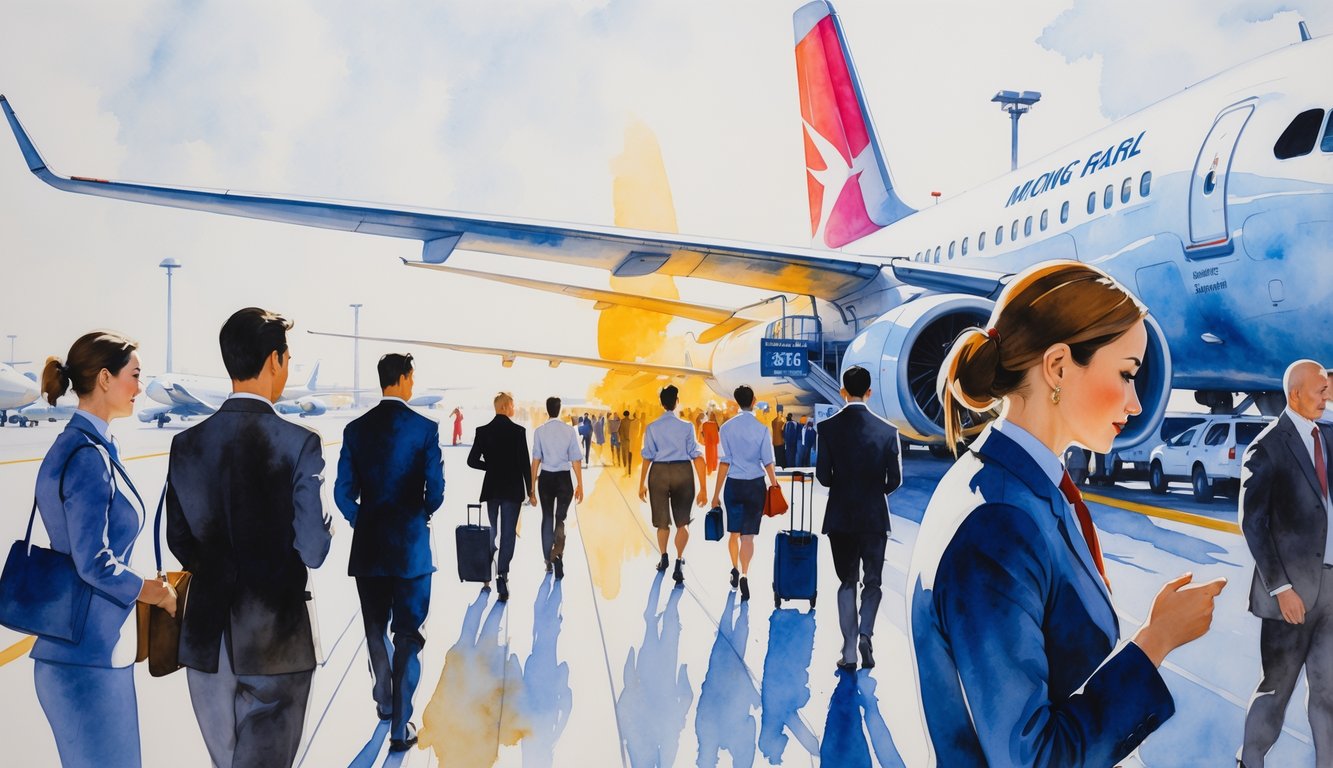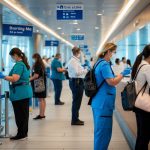
Optimizing Passenger Satisfaction Through Boarding Strategies
Untangling this mess? Forget it. Everyone wants smooth travel, no lines, no delays, just a little comfort. But then boarding turns into a rolling disaster and airlines act like random seat assignments will fix everything. Spoiler: they don’t.
Enhancing Passenger Experience
Boarding’s basically a grumble-fest; people hate being herded. I lose it if I’m stuck behind someone repacking their bag for the tenth time. Airlines try to sell perks—pre-boarding, mobile passes, business class lanes—but the second the aisle clogs, nobody’s happy, whether you’re up in 2A or back in 33F.
“Outside-in” boarding? Sounds like something cooked up in a focus group, but there’s data (barely): median boarding time drops a smidge (1.92%, not exactly life-changing), and people do notice when they’re not elbowing past strangers, according to ScienceDirect. If window seats board first, service moves a little faster (except for the folks who jump up before their row’s called—every single flight). Honestly, seat blockers are the real villains here.
A flight attendant once told me, deadpan, “If we board late, the only way to keep people happy is let the kids run wild and pray the business class folks don’t flip out.” Why do we all accept this?
Minimizing Delays and Congestion
You might think tech would fix the crowding—automated gates, biometric scanners, whatever. Nope. Just speeds up the stampede by, like, a minute and a half. Then everyone bottlenecks at row 24, as usual. After hundreds of flights, I’m convinced: vague boarding rules and bin hogs slow everything down.
Simulations? Sometimes they’re weirdly optimistic, sometimes bleak. Some “disorderly” strategies actually beat the old-school lines, which makes no sense, but apparently it’s true (see this boarding strategies evaluation). Airlines ignore it, keep the chaos, call it “fair”—as if little Timmy in business class will make the plane leave faster.
One thing I notice: when aisle seat people stash their bags early, it sets off a chain reaction. Suddenly, everyone behind is out of place, clogging the aisle, boarding slows to a crawl. No app or gentle chime fixes stubborn people. Every flight’s just another experiment in manufactured gridlock.
Frequently Asked Questions
Standing at the gate, I started realizing boarding zones aren’t random—this stuff decides who gets bin space, whether my snacks survive, if my row ever moves. Funny how one tiny number on your boarding pass can totally change your flight before you even sit down.
What does Boarding Zone 1 indicate about your flight experience?
Zone 1, huh? Supposed to be VIPs—business class, status holders, people who paid extra (once watched a guy just flash an Amex and upgrade on the spot).
But honestly, they’re usually standing in line forever while everyone else is still stretching or buying overpriced snacks.
Can you explain the significance of Boarding Zone 4 for passengers?
Zone 4? Don’t get me started. I got stuck with a giant “4” on my pass after a Montreal conference and it basically meant: you’re last.
All the window seats gone, bins crammed (usually with jackets—who does that?), and you’re the afterthought. It’s usually the economy crowd, basic fares, and you get zero mercy unless the whole flight’s running late.
What perks come with obtaining Zone 2 Boarding on Air Canada?
Air Canada’s Zone 2? People fight for that. I lucked into it once—company paid for “comfort fare”—and suddenly I’m guarding my carry-on like it’s the last loaf of bread.
Zone 2 dodges the worst chaos (supposedly saves about 10 minutes, according to some analyst at a 2023 webinar I barely stayed awake through).
But honestly, you feel “almost special” until a platinum member breezes past, glued to their phone, like the rest of us don’t exist.
How does Qatar Airways distinguish Boarding Zone 3 from others?
Qatar Airways loves their pyramids—Zone 3 is never just “middle.” Usually window seats or back-of-the-plane folks, they get called first, maybe to keep the aisles clear, but honestly? Feels like airline Tetris.
Their crew, always dressed sharper than my boss, will literally call out row numbers, not just zones—once saw a steward tell a businessman, “Sir, not yet. You are not Zone 3.”
Is it efficient? Or just psychological warfare? I can’t tell.
What factors influence how boarding zones are assigned by airlines?
How do airlines pick zones? No one really knows. I’ve had the same seat on different flights, landed in different groups every time. Status, fare, seat, maybe a secret algorithm—I swear only a handful of ops people actually know.
This operations interview breaks down the logic: boarding from the back, window-before-aisle, all to avoid the classic aisle jam.
But honestly? I heard a gate agent say, “Sometimes it just depends how cranky we are.” That tracks.
Is there an advantage to being assigned to Zone 3 on your boarding pass?
Zone 3, huh. Honestly, what’s the deal? You’re not first, that’s for sure, but at least you dodge the full-on chaos of Zones 4 and 5—where, I swear, people start swinging bags like it’s a contact sport. I’ve heard someone swear up and down, “Zone 3’s the sweet spot, you just breeze through.” Yeah, okay, until I watched them get steamrolled by a family with three strollers and a dog. Do airlines just make up these zones to mess with us? I keep thinking there’s some reason, but every time I’m in Zone 3 I just end up standing around, questioning my life choices and wondering if any of this boarding order stuff even matters.



